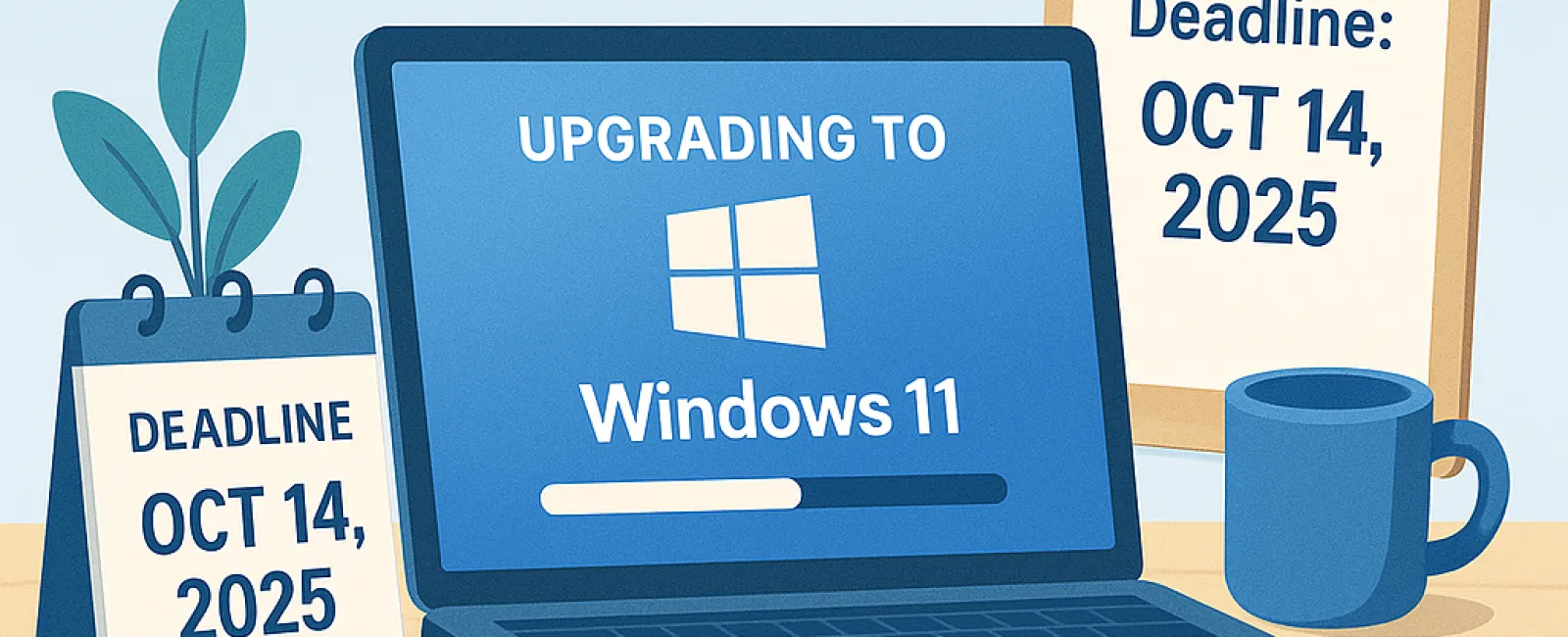June 23, 2025
If you're still using Windows 10 on your business computers, here's the bottom line: Time is running out. Microsoft will officially end support for Windows 10 on October 14, 2025. After that date, there will be no more security updates, bug fixes, or technical support. But what business owners really need to know is that the cost of waiting isn't just about having to upgrade eventually—it's about the risks and expenses you face right now by delaying.
"We'll Deal With It Later" Is An Expensive Strategy
We understand that upgrading every machine in your business isn't a fun or cheap task. It's tempting to put it off—until something goes wrong. But procrastination comes with real costs:
1. You're Operating Without A Safety Net
Once Microsoft stops updating Windows 10, any new security vulnerabilities become your problem. Hackers target outdated systems because they're easier to breach. It's like locking the front door but leaving the windows open. A single security breach could cost you thousands or even jeopardize your entire business.
2. Software And Hardware Compatibility Issues
Many business applications, including accounting software, CRMs, and industry-specific tools, are already dropping support for Windows 10. If your software stops working in the middle of a project or crashes during a client presentation, what will that cost you? It's not just software either—new printers, peripherals, and security devices may not work properly with an outdated operating system.
3. Lost Productivity
Older systems run slower, crash more often, and frustrate your team. Even small delays add up, reducing efficiency, morale, and your competitive edge. If each employee loses 10 to 15 minutes a day due to tech problems, think about how much time—and money—that adds up to over a month.
4. Emergency Upgrades Are Always More Expensive
Waiting until your systems fail or your team is locked out leads to costly emergency fixes:
- Last-minute hardware purchases
- Expensive rush IT service fees
- Business downtime while machines are replaced
Planning ahead now can save you a lot of stress and money later.
5. You're Risking Compliance Violations
If your business handles sensitive information or follows regulations like HIPAA or PCI-DSS, running unsupported software could lead to fines or legal trouble. Many regulations require up-to-date security, and Windows 10 won't meet those standards after October 2025.
What Smart Business Owners Are Doing Now
They're getting ahead of the deadline by not only upgrading devices but also using this transition to:
- Audit which devices need to be replaced
- Streamline software and tools
- Strengthen cybersecurity measures
- Plan IT budgets wisely for 2025
How To Make The Transition Smooth
Here's our advice:
- Run a compatibility check—Not all machines can run Windows 11, so identify which ones need replacement.
- Audit your applications—Ensure your essential software will work on Windows 11 or newer systems.
- Budget for hardware now—Avoid supply chain delays later.
- Partner with an IT provider—We can manage the entire upgrade process smoothly, with no downtime or surprises.
Don't Wait Until October To Panic
Procrastinating will cost you more—in money, stress, and lost opportunities. We're helping small businesses upgrade smartly: planned, seamless, and optimized for future growth.
Click here or call us at 281-402-2620 to book your 15-Minute Discovery Call and we'll help you identify what
needs upgrading, what can stay and how to build a transition plan that won't
disrupt your business before the deadline.




